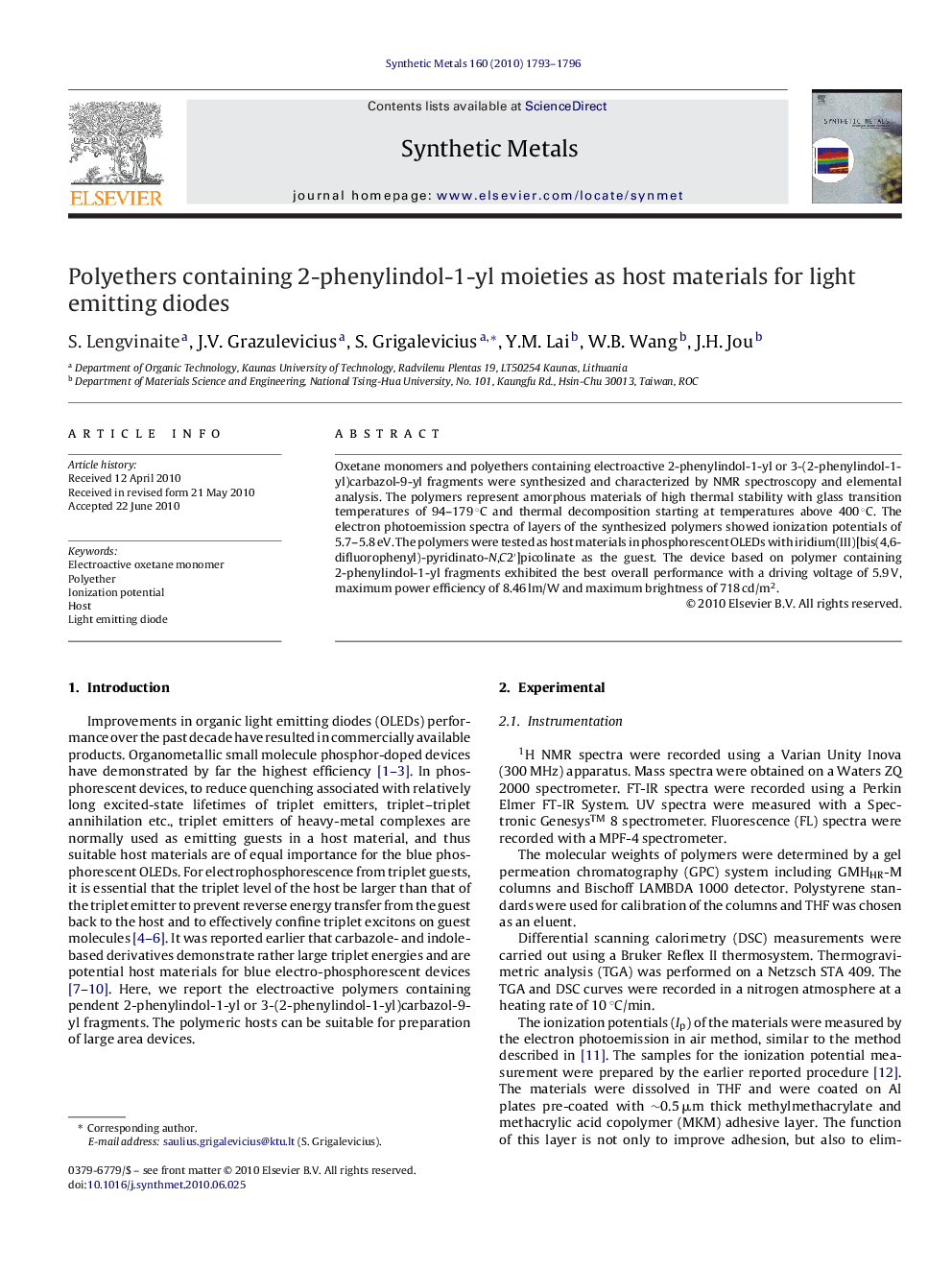| Article ID | Journal | Published Year | Pages | File Type |
|---|---|---|---|---|
| 1442417 | Synthetic Metals | 2010 | 4 Pages |
Abstract
Oxetane monomers and polyethers containing electroactive 2-phenylindol-1-yl or 3-(2-phenylindol-1-yl)carbazol-9-yl fragments were synthesized and characterized by NMR spectroscopy and elemental analysis. The polymers represent amorphous materials of high thermal stability with glass transition temperatures of 94-179 °C and thermal decomposition starting at temperatures above 400 °C. The electron photoemission spectra of layers of the synthesized polymers showed ionization potentials of 5.7-5.8 eV. The polymers were tested as host materials in phosphorescent OLEDs with iridium(III)[bis(4,6-difluorophenyl)-pyridinato-N,C2â²]picolinate as the guest. The device based on polymer containing 2-phenylindol-1-yl fragments exhibited the best overall performance with a driving voltage of 5.9 V, maximum power efficiency of 8.46 lm/W and maximum brightness of 718 cd/m2.
Related Topics
Physical Sciences and Engineering
Materials Science
Biomaterials
Authors
S. Lengvinaite, J.V. Grazulevicius, S. Grigalevicius, Y.M. Lai, W.B. Wang, J.H. Jou,
